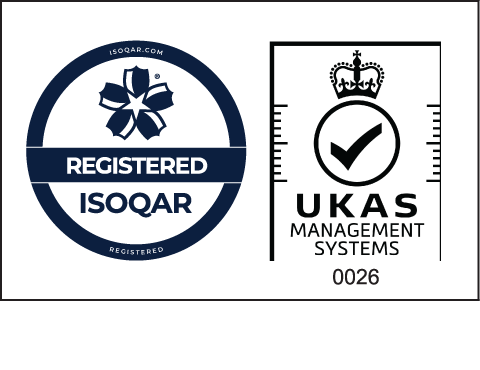Features from Meantime IT
Time for a refreshing change
When the nights become longer and weather becomes warmer, thoughts turn to tending the garden, cleaning the house of its winter gloom and getting everything ready for the sun’s glare. With the fresh air comes a natural instinct to freshen up our lives, and our IT systems shouldn’t be left out of the clean-up operation.
 Even if your website’s doing a great job of bringing in business or selling your products and you’re happy with how it looks, you can’t rest on your laurels and leave it to work for you. Constant checks and tweaks are essential to keep it fresh and ahead of the game, not least because of Google’s ever-changing rules on SEO.
Even if your website’s doing a great job of bringing in business or selling your products and you’re happy with how it looks, you can’t rest on your laurels and leave it to work for you. Constant checks and tweaks are essential to keep it fresh and ahead of the game, not least because of Google’s ever-changing rules on SEO.
Cast your mind back a few years ago; repeating the same word over and over again used to be enough to get you near the top of the page. Now Google will penalise you and send you straight to the back of the queue if you try to push in too many keywords.
If you keep on top of our tips to spring clean your website, you won’t need to get the industrial cleaners in.
Surface value
Start where your customers do. What are they finding when they open up your pages? Task someone with reading the content, page by page, at least every other month. You’ll be surprised at how many tweaks you’ll find it needs, perhaps because of out-of-date cultural references or jokes in your text, or maybe just services that you no longer offer. Scrap anything that could have become inflammatory because of recent news events and archive anything that remains correct but is out of date to ensure all your visible content is current and valid.If you have a content managed website with multiple users, appoint a pedantic grammar fiend to be in charge of checking content for errors as often as possible, ideally after every change is made. While it’s not always possible to ask someone to approve an entry each time one is made, it’s essential that errors and typos are spotted as soon as possible. The odd misplaced apostrophe here and errant capital letter there will soon make your carefully designed site look like an amateur project.
 Check for broken links too. Go through every page and click on every link. Even just a single ‘404 - sorry not found’ message will make the place look VERY untidy.
Check for broken links too. Go through every page and click on every link. Even just a single ‘404 - sorry not found’ message will make the place look VERY untidy.Be image conscious
As well as checking your text, pay close attention to the images you use. Are the people in them still part of your team? Do the stills of web pages still accurately depict what you do? Or could they look so old-fashioned they do more harm than good? Are the captions correct? Are you promoting your services with a photograph of a celebrity who’s since been subjected to negative media treatment, or even arrest?Behind the scenes, empty your image library of images that have been uploaded but aren’t being used any more. Your overall website file sizes should be as small as possible. The lower the file size, the faster your website will load, and we all know how impatient we’ve become with websites that take an age to appear. The three second rule doesn’t only apply to food that’s dropped on the floor, no matter how clean it is. And speed isn’t only better for the users, it also helps with the ever-important SEO.
Cleaning under the counters
The difference between a good spring clean and the usual spit and polish is the effort and intensity that goes into the job. Just as we move the heavy cabinets to clean skirting boards that never see the light of day (what do you mean you never do that?!) our annual website spruce should address areas not always at the top of the list of chores.Check behind the scenes to make sure meta content is current. Look at titles and keywords to make sure they’re still valid and still reflects the content on the page. Numerous text updates may have changed the focus of a page from holidays to shoes, but if your meta title still says, ‘bargain holiday bonanza’ you’re not going to attract visitors via their search terms.
Throw out the rubbish
There comes a time when you just have to accept that the old threadbare cushion you’ve had since your first student digs no longer has a place in your home. Similarly, web habits that were once de rigueur can quickly become old hat and need to get in the bin. Anyone remember the old method of repeating a word or phrase many, many times in order to boost your place in the Google ranks? Here’s an example of a site we came across when looking for a copywriter in our area a few years back:
Anyone remember the old method of repeating a word or phrase many, many times in order to boost your place in the Google ranks? Here’s an example of a site we came across when looking for a copywriter in our area a few years back:
"I am a copywriter based in Manchester. I write copy in Manchester, and my copywriting skills are frequently sought out by people in Manchester and beyond. Copywriting can be written in different ways. It can be written as copywriter, copy-writer or copy writer. However you write copywriter, if you need a copywriter in Manchester I’m a Manchester-based copywriter."
Awful, clumsy and SO old-fashioned, yet at one point it was all the rage. She may have been top of the rankings but we certainly didn’t hire her; and Google has been penalising such nonsense for quite some time, thankfully.
Until very recently an underscore in a URL was the height of fashion, but now it’s firmly out of favour. What used to be bespoke_software has become bespoke-software, one of the key reasons being it’s simply easier for users on a mobile or tablet to find the hyphen than it is to find the underscore. Another reason, more important in SEO terms, is that Google reads a hyphen as a word separator but doesn’t recognise underscores, so bespoke_software becomes bespokesoftware and isn’t recognised as the search term you want it to be.
Enhance visibility
Is your site visible to everyone you want to be able to see it? A quick run through the W3C validator or any independent accessibility checker will highlight any errors in your site’s accessibility and usability – you’d be surprised how many errors can creep in un-noticed, even if you were 100% clear when you went live. A single image that’s been added without a specified width and height can create havoc for a screen-reader. When you’re sure the accessibility’s ship-shape, take out the Google webmaster tools and run a report on your site’s visibility.
When you’re sure the accessibility’s ship-shape, take out the Google webmaster tools and run a report on your site’s visibility.
Above all, remember why your site’s there in the first place. Whether to sell, educate, inform or encourage debate, its primary purpose should be to give the user an experience they’ll enjoy. Well-written, well-presented, content driven sites will do much more for you in the rankings than trying to out-smart the robots that trawl your site for Google.
Download this guide as a pdf

